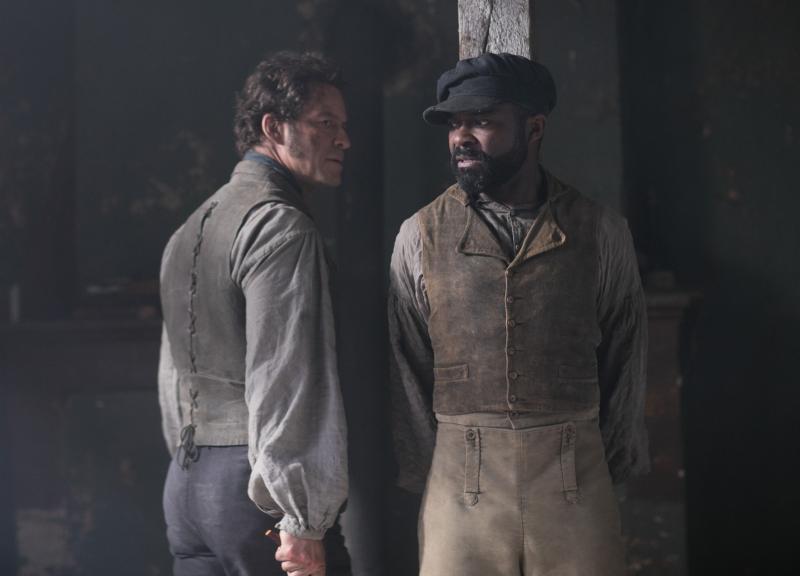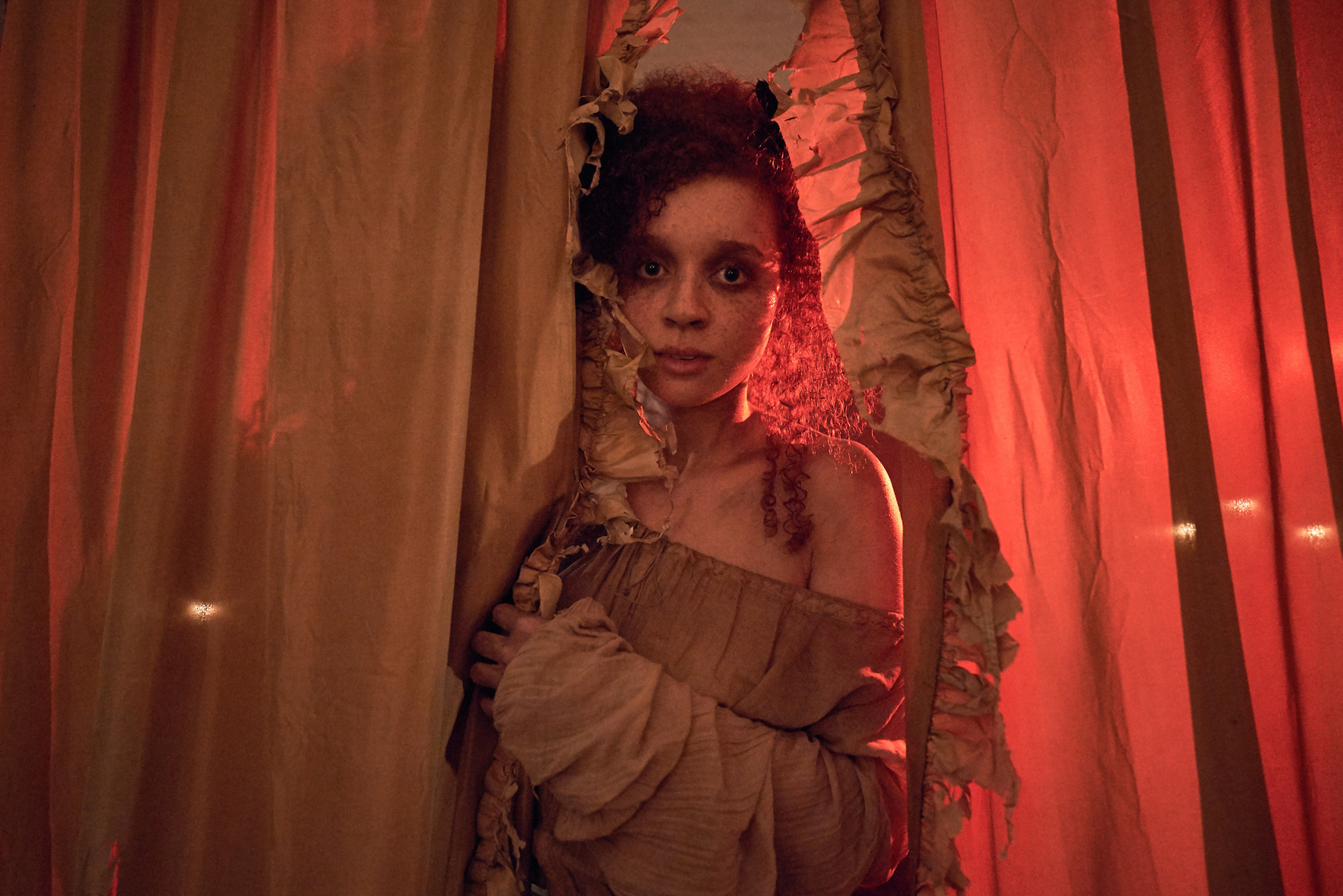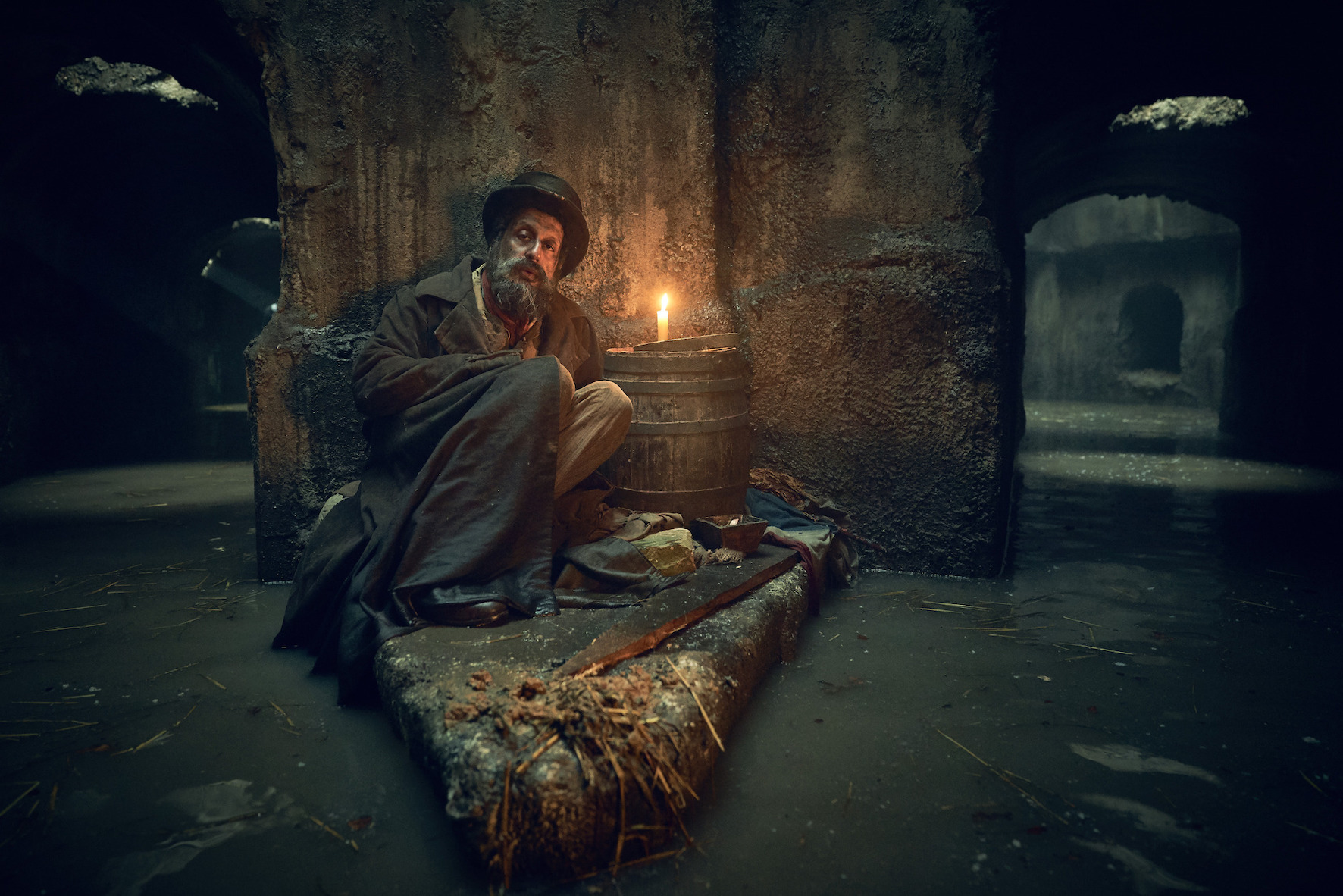Les Misérables, BBC One, series finale review - more moving than revealing | reviews, news & interviews
Les Misérables, BBC One, series finale review - more moving than revealing
Les Misérables, BBC One, series finale review - more moving than revealing
David Oyelowo takes Javert's secret motive to the grave, while Adeel Akhtar triumphs

It took the best part of six episodes, but we got there in the end: the reason David Oyelowo accepted the confusingly underwritten part of Inspector Javert in BBC One’s adaptation of Les Misérables was finally revealed.
Before the big moment came, Javert spent some of the last two episodes lashed to a post. A character composed of flesh and bone might have been in need of the lav. Not Javert, who was all spleen, steam and straw. (Compare and contrast with the full-bladdered Bonapartists as they bravely faced the firing squad: “I piss on your blindfold!”) When Jean Valjean passed up the opportunity to put a bullet between the eyeballs of his nemesis, the exoskeleton lost its raison d’être. “All is not well,” he stuttered, being powerless to conceive of mercy as anything other than a manifestation of insanity. Suddenly unable to finish his sentences, his only course was to finish his life instead with a spectacular suicidal leap into the Seine. There has been the usual argy-bargy at the expected mustering points about the casting of an actor of Nigerian origin to play a Frenchman of the early 19th century. The real problem was that the part of Javert had few shades of grey and nothing Oyelowo, for all his unarguable gifts, attempted could truly colour him in. As Valjean, Dominic West had much more meat to sink his teeth into in the story of a man constantly grappling with the raw instinct to survive and a higher desire for redemption. He mightily captured the mismatch between Valjean’s physical strength and emotional vulnerability. And yet even he wrestled with underwriting, not least at the barricade where in the final episode he was restricted to a silent watching brief as Pontmercy and little Gavroche demonstrated their insouciant moral courage.
There has been the usual argy-bargy at the expected mustering points about the casting of an actor of Nigerian origin to play a Frenchman of the early 19th century. The real problem was that the part of Javert had few shades of grey and nothing Oyelowo, for all his unarguable gifts, attempted could truly colour him in. As Valjean, Dominic West had much more meat to sink his teeth into in the story of a man constantly grappling with the raw instinct to survive and a higher desire for redemption. He mightily captured the mismatch between Valjean’s physical strength and emotional vulnerability. And yet even he wrestled with underwriting, not least at the barricade where in the final episode he was restricted to a silent watching brief as Pontmercy and little Gavroche demonstrated their insouciant moral courage.
The drama’s final chapter, which featured an outbreak of life-sparing and moral hand-brake turns, had intensely moving moments. But this adaptation of Les Misérables has not quite managed to live up to the considerable promise of the opening episodes. Where War and Peace, also fitted into six hours by Andrew Davies, had a hurtling narrative conviction, and looked quite splendid, mostly what was on the menu here was a malnourishing diet of sadism and claustrophobia. They were served up together in Valjean’s climactic ghastly journey through Paris’s maze of sewers. Perhaps it’s not fair to compare Hugo’s fist-clenched sloganeering (“Comrades, this is a grim moment in our history but a glorious one!”) with the psychological complexities of Tolstoy. The women in particular did not fare well. It was left unclear why an actress of the stature of Olivia Colman took on a role with no dénouement. Lily Collins was brutalised as Fantine, but was all that pain worth it to produce, in Cosette, a narcoleptic princess from a fairytale? The most fascinating and complex female character was Eponine: Erin Kellyman made the most of the opportunity, shifting between the gears from flirty minx to wounded animal.
Perhaps it’s not fair to compare Hugo’s fist-clenched sloganeering (“Comrades, this is a grim moment in our history but a glorious one!”) with the psychological complexities of Tolstoy. The women in particular did not fare well. It was left unclear why an actress of the stature of Olivia Colman took on a role with no dénouement. Lily Collins was brutalised as Fantine, but was all that pain worth it to produce, in Cosette, a narcoleptic princess from a fairytale? The most fascinating and complex female character was Eponine: Erin Kellyman made the most of the opportunity, shifting between the gears from flirty minx to wounded animal.
The most seductive performance of all was Adeel Akhtar, who channelled the spirit of Fagin as the chancer Thénardier. Whenever he was on screen, Les Misérables crackled with a keen, malign energy. He genuinely looked like a rat in human form, a creature of the shadows unclean both inside and out. As for the final woe-begotten image of boys begging in the street, they looked as if they'd been exposed to a little too much soap. As perhaps have we all.
rating
Explore topics
Share this article
Add comment
The future of Arts Journalism
You can stop theartsdesk.com closing!
We urgently need financing to survive. Our fundraising drive has thus far raised £49,000 but we need to reach £100,000 or we will be forced to close. Please contribute here: https://gofund.me/c3f6033d
And if you can forward this information to anyone who might assist, we’d be grateful.

Subscribe to theartsdesk.com
Thank you for continuing to read our work on theartsdesk.com. For unlimited access to every article in its entirety, including our archive of more than 15,000 pieces, we're asking for £5 per month or £40 per year. We feel it's a very good deal, and hope you do too.
To take a subscription now simply click here.
And if you're looking for that extra gift for a friend or family member, why not treat them to a theartsdesk.com gift subscription?
more TV
 The Count of Monte Cristo, U&Drama review - silly telly for the silly season
Umpteenth incarnation of the Alexandre Dumas novel is no better than it should be
The Count of Monte Cristo, U&Drama review - silly telly for the silly season
Umpteenth incarnation of the Alexandre Dumas novel is no better than it should be
 The Narrow Road to the Deep North, BBC One review - love, death and hell on the Burma railway
Richard Flanagan's prize-winning novel becomes a gruelling TV series
The Narrow Road to the Deep North, BBC One review - love, death and hell on the Burma railway
Richard Flanagan's prize-winning novel becomes a gruelling TV series
 The Waterfront, Netflix review - fish, drugs and rock'n'roll
Kevin Williamson's Carolinas crime saga makes addictive viewing
The Waterfront, Netflix review - fish, drugs and rock'n'roll
Kevin Williamson's Carolinas crime saga makes addictive viewing
 theartsdesk Q&A: writer and actor Mark Gatiss on 'Bookish'
The multi-talented performer ponders storytelling, crime and retiring to run a bookshop
theartsdesk Q&A: writer and actor Mark Gatiss on 'Bookish'
The multi-talented performer ponders storytelling, crime and retiring to run a bookshop
 Ballard, Prime Video review - there's something rotten in the LAPD
Persuasive dramatisation of Michael Connelly's female detective
Ballard, Prime Video review - there's something rotten in the LAPD
Persuasive dramatisation of Michael Connelly's female detective
 Bookish, U&Alibi review - sleuthing and skulduggery in a bomb-battered London
Mark Gatiss's crime drama mixes period atmosphere with crafty clues
Bookish, U&Alibi review - sleuthing and skulduggery in a bomb-battered London
Mark Gatiss's crime drama mixes period atmosphere with crafty clues
 Too Much, Netflix - a romcom that's oversexed, and over here
Lena Dunham's new series presents an England it's often hard to recognise
Too Much, Netflix - a romcom that's oversexed, and over here
Lena Dunham's new series presents an England it's often hard to recognise
 Insomnia, Channel 5 review - a chronicle of deaths foretold
Sarah Pinborough's psychological thriller is cluttered but compelling
Insomnia, Channel 5 review - a chronicle of deaths foretold
Sarah Pinborough's psychological thriller is cluttered but compelling
 Live Aid at 40: When Rock'n'Roll Took on the World, BBC Two review - how Bob Geldof led pop's battle against Ethiopian famine
When wackily-dressed pop stars banded together to give a little help to the helpless
Live Aid at 40: When Rock'n'Roll Took on the World, BBC Two review - how Bob Geldof led pop's battle against Ethiopian famine
When wackily-dressed pop stars banded together to give a little help to the helpless
 Hill, Sky Documentaries review - how Damon Hill battled his demons
Alex Holmes's film is both documentary and psychological portrait
Hill, Sky Documentaries review - how Damon Hill battled his demons
Alex Holmes's film is both documentary and psychological portrait
 Outrageous, U&Drama review - skilfully-executed depiction of the notorious Mitford sisters
A crack cast, clever script and smart direction serve this story well
Outrageous, U&Drama review - skilfully-executed depiction of the notorious Mitford sisters
A crack cast, clever script and smart direction serve this story well
 Prost, BBC 4 review - life and times of the driver they called 'The Professor'
Alain Prost liked being world champion so much he did it four times
Prost, BBC 4 review - life and times of the driver they called 'The Professor'
Alain Prost liked being world champion so much he did it four times

Comments
Interesting use of the term
Interesting use of the term handbrake turn, when the term volte-face would have been apposite.
Perhaps don't blame Hugo for